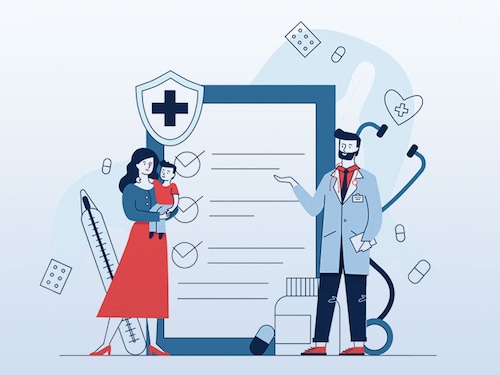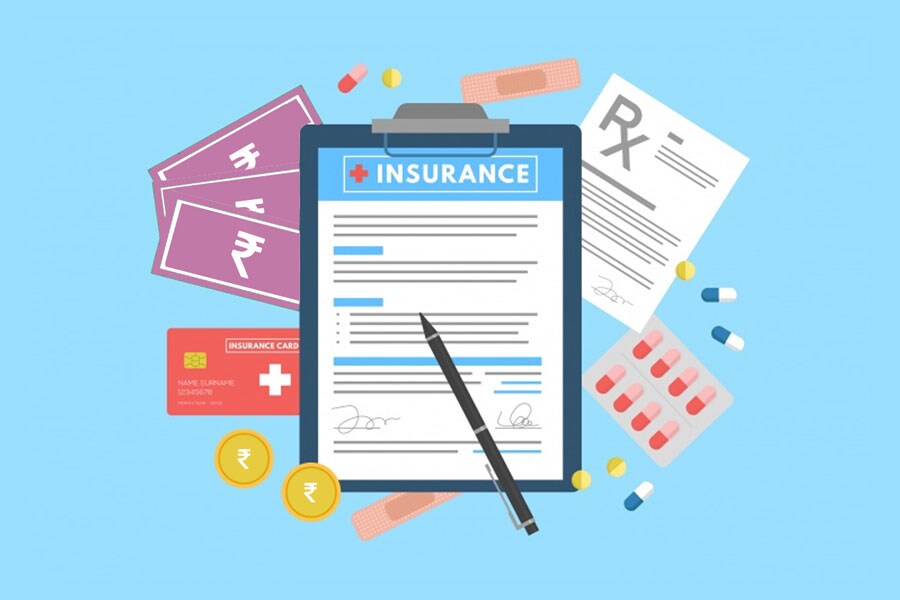Are you adequately covered by your health insurance policy?
The unfortunate fallout of this rise in medical expenses is that although survival and recovery rates have improved, indebtedness follows


With the Corona virus pandemic, and other contagious diseases that have surfaced in the past few decades, there are genuine concerns that despite one’s best efforts to stay healthy, the chances of falling prey to such contagions is a distinct possibility.
A tryst with hospitalisation is not an unforeseen medical adversity anymore. With the rising incidence of accidents, communicable and vector-borne diseases and lifestyle diseases that require acute or chronic medical attention, most people have experienced multiple cases of hospitalisation within their immediate family, over the years.
Rising cost and impact
While healthcare and medical treatment are improving by leaps and bounds, delivering more sanguine outcomes, the flipside has been an increase in the cost of treatment. According to a report by Mercer Marsh Benefits, the medical trend rate in India (the per-person cost increase due to medical inflation) is likely to rise at double the inflation rate. So, effectively, the medical trend rate is likely to be 10% in India, as inflation hovers around 5%.
The unfortunate fallout of this rise in medical expenses is that although survival and recovery rates have improved, indebtedness follows. Studies have shown that Out-of-Pocket (OOP) health expenses drive millions of Indians below the poverty line every year. At a different level, even those who have moderate savings and investments could face a major setback to achieving other goals and aspirations, when impacted by large unexpected medical expenses.
Health insurance solutions
Fortunately, health insurance is available to take care of various unforeseen health emergencies. Policies usually cover not only the cost of hospitalisation and the procedures and medical care during that period but related medical expenses, such as diagnostic tests and medication, incurred before and after the event of hospitalisation.
Tax Break – an added attraction
In addition to all its other benefits, purchasing medical insurance offers a tax break Under Section 80D. As per this provision, medical insurance premiums paid are eligible for a deduction of up to a limit of Rs 25,000, for self, spouse and children. In the event that the policy is for parents who are over 60 years of age, a deduction of an additional Rs 25,000 is allowed.
Factors to take into account while purchasing a policy
Today, there are a range of health insurance policies available to meet the unique needs of varied customers. Accordingly, while choosing a policy that is most suitable for you and your family, there are various things to take into account, such as, whether you want individual cover or a family floater (cover for your entire family), how much insurance is adequate based on the extent of medical cover you anticipate for the year, if the network of hospitals includes the ones you may like to avail of, if necessary, what are the waiting periods for various diseases/conditions before they are covered, whether there are any additional benefits with the policy like free medical check-ups, etc. and of course, the premium that you will have to pay for coverage per annum.
Employee cover could be ineffective
Most organisations today offer their employees health insurance cover. This has led many to avoid purchasing insurance cover of their own. There are three factors that must be taken into account in such a situation
To address a variety of insurance needs of people, some companies such as Liberty General Insurance Ltd. (LGI) have built in a number of customised features into their policies.
For instance the Liberty Health Connect Policy offers a comprehensive health cover, which reimburses healthcare and hospitalization expenses. This health product reimburses pre-hospitalisation expenses incurred upto 60 days before and post-hospitalisation expenses incurred upto 90 days after the actual hospitalisation. The coverage also includes day care treatment as every medical emergency may not require hospitalisation, with the advancement of medical sciences.
Flexibility and thoughtful features
Other noteworthy features of this policy, which make it truly practical and comprehensive include Hospital daily Cash Allowance, Nursing allowance, Organ transplant, Recovery benefit, and Extension of Policy period in case of overseas travel
The policy offers cashless care at all hospitals that are part of its wide network. To meet the needs and budgets of its patrons, it offers a flexible term, enabling its clients to choose between coverage for 1 year or 2 years.
Acknowledging the need for people to stay insured, especially when they advance in age, the policy accommodates with Assured Renewal for Life. Further, so that the insured is never caught off guard with depleted insurance in the face of a medical emergency, it enables Restoration of Sum Insured.
Additional perks and benefits
A useful perk of the policy is that it rewards the insured with a free health check-up after 2 years of continuous policy renewal with LGI, irrespective of the claims made during the term. Most importantly, the policy has unique loyalty benefits for every claim-free year, the Sum Insured automatically increases by 10% for the Basic Sum Insured and this benefit can go up to a maximum of 100% of the Basic Sum Insured.
LGI’s Health Connect Supra
Realising that it is difficult to predict impending medical expenses, LGI offers Health Connect Supra Policy, which is as an extension to existing Liberty General’s Health Insurance Policies. Towards improving the coverage, it works alongside ongoing health insurance policies and enhances them to provide larger coverage at a much lower premium. Some of the attractive features of this top-up policy include the option of coverage of up to Rs 1 crore world-wide and no pre-policy medical check-up up to the age of 65 years.
Stress-free treatment and recovery
Choosing an augmented level of cover, which is available at a marginal premium, ensures that the best of treatment, globally, can be availed without worrying about the cost..
Having such a comfort effectively shifts the focus of the insured and his or her family from concerns about raising funds for medical treatment to getting the best care and recovering from the emergency, stress-free.
Disclaimer: The views, suggestions and opinions expressed here are the sole responsibility of the experts. No Forbes India journalist was involved in the writing and production of this article.
First Published: Apr 02, 2020, 10:15
Subscribe Now